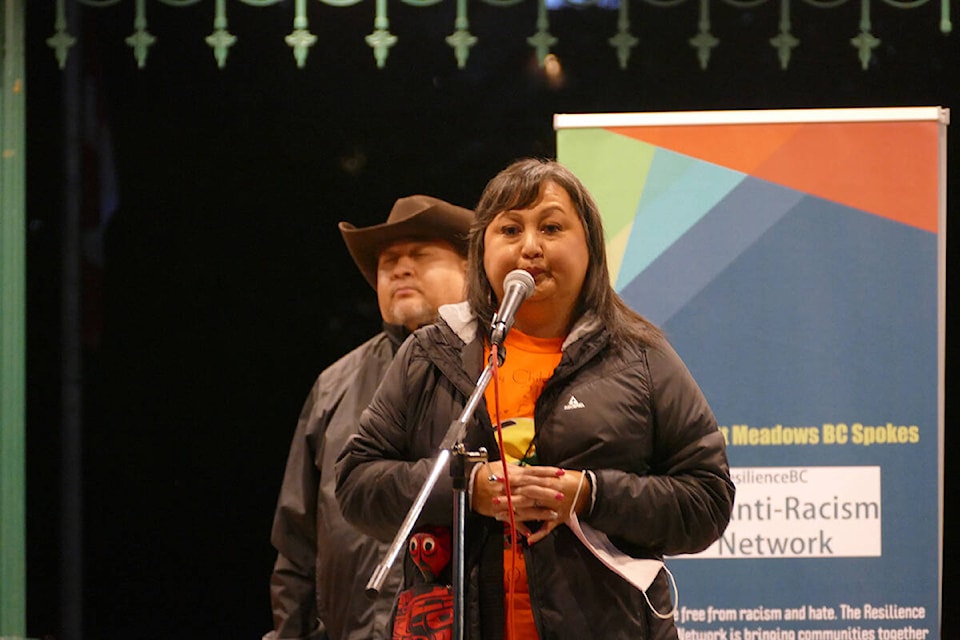Katzie First Nation Chief Grace George believes Canada has a long way to go before reconciliation can be declared between the Indigenous people of Canada and the Canadian government.
“This is a beginning,” she said of the inaugural National Day of Truth and Reconciliation.
As Chief George reflected on this most recent declared federal statutory holiday she noted the importance of the day as a time for reflection and healing, “as many survivors live present day”. It is a day, she said for the community to, “come together to acknowledge the atrocities of the of the residential school system and the horrific impact this dark, Canadian legacy has carried throughout our communities.”
At the event the Katzie First Nation held for Truth and Reconciliation, George said, there was meaning behind all the activities that took place.
“They embodied a sharing of our culture and traditions, our gifts to create a healing environment,” she said.
But most significant for her was the singing and dancing by the First Nation’s young people.
“Their strength will always engulf my spirit. That was very emotional for me, and I am so proud of them. They are so strong and when I witness them practicing our culture, I know for certain our future is strong,” she said.
During the event Chief George addressed guests at the invitation-only event, explaining the significance of the day and the challenges First Nations people still face.
She also talked about the meaning behind the word nəc̓amát – meaning “One heart, one mind” – and asked everyone gathered to embrace the opportunity to create meaningful change.
Residential schools began about 1860, explained George, and the last school located in Saskatchewan closed in 1996. It is said that there were over 150,000 children who were stolen from their families.
READ MORE: Katzie mark first ever National Truth and Reconciliation Day
ALSO: Vigil marks first National Day of Truth and Reconciliation in Maple Ridge with video
“I believe that there were more,” she noted.
“The unearthing of the children who did not return home will continue and we will need each other to process and get through those hard days. Although we, as a people, knew of these horrific findings, it still hurts. It’s our shocking reality,” remarked George, asking how can closure take place when the atrocity itself has not even been fully acknowledged.
Orange Shirt Day was founded by residential school survivor Phyllis Webstad who attended residential school in Kamloops. On her day of arrival she was stripped of her new orange shirt.
“Her courage created significant change for this country, one person created this huge ripple effect of healing. I will admire her determination always,” said George.
Only six of 94 Calls to Action composed in 2015 by the Truth and Reconciliation Commission of Canada have been acted upon. Which is not progress in George’s books.
“Reach out to your elected officials, your city councils, your MLA’s, your MP’s, enquire about their commitment, and work to date,” appealed George.
“As our Prime Minister spent September 30th on vacation in Tofino, it is clear that it is up to us to move this work forward.”
Have a story tip? Email: cflanagan@mapleridgenews.com
Like us on Facebook and follow us on Twitter.
